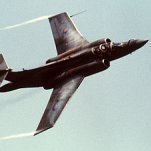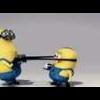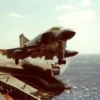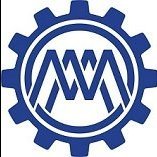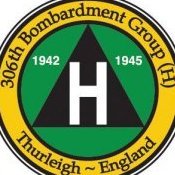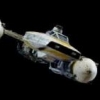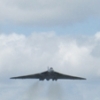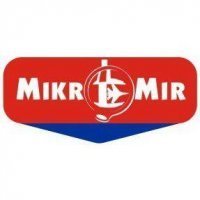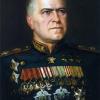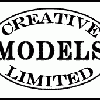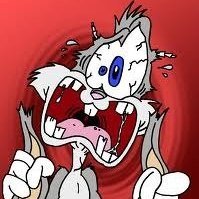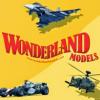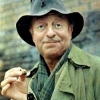Search the Community
Showing results for tags 'soviet'.
-
Decided to start work on building my Eduard Lavochkin La-7 profi pack kit, while waiting for the Vampire to dry. This is my first Eduard kit, first glimpse at photo etch, and first Soviet aircraft. The box and contents are perfectly presented, only one (very shiny) sprue, along with photo etched parts, masking and a detailed sheet of decals. Makes me think attention to detail is important here. I'm considering finishing the aircraft in the colours of Lt.Col. S. F. Dolgushin, having achieved over 500 missions and was regarded as a fighter ace of WWII.
-
I'm attempting the bobcat models yak 28 p firebar, picked it up today,and first impressions are it looks really nice on the sprues, while ive spent most of my modelling day getting my harrier gr9 a bit closer to completion ive spent the last 45mins dryfitting ,I've not done a whole aircraft in alclad before and i understand from a bit of research that as good of an initial fit is essential to getting a good finish,that is the less damage to panel lines and minimal filler the better,second impressions are ,while not really a criticism the plastic seems a bit waxy, but this is a criticism the mating surfaces of the fuselage are ,to be kind not exactly tamiya,now to be honest i never expected tamiya build quality,but theres going to be a bit more sanding than i would have liked,and hopefully the filler i use,will be ok with waxy plastic,time will tell. Photos tomorrow, cheers Glynn
-
This beauty arrived yesterday and with the best of intentions I want to finish another swing-winger first (Revell's 1/48 Tornado), but I know what I'm like and there's every chance I'll cave and start this sooner. I've always wanted to build an Su-17/22 so when the KH CAD shot appeared last year it was merely a waiting game! Im surprised there hasn't already been one started here, and the kits come in for quite a bit of stick online (so did Revell's Tornado mind you and mines been a pleasure so far!) so I'm looking forward to seeing if this really is that bad. The he box and content is certainly impressive so far, will post a few more pics tomorrow. Eng
-
I bought this kit ages ago to make it part of my planned RAF Phantom Black Mike QRA diorama. However in need of some light relief and a break from etch and accuracy I had a couple of hours spare and started to throw this together last night. I then thought it would be appropriate for this GB as the Bear-D was defiantly around in the 1970's so here he is. Sorry for no sprue shot, you'll just have to take my word for the fact it wasn't already started, and the cockpit green is Mr.Hobby Emerald which will do, the windows are so small there is no point doing anything inside.
-
ZiL-131 timber truck, ICM 1/35
-
Hello fellow modellers, I hope you are having a pleasant weekend. I am building a 1/72nd scale Amodel Polikarpov I-16 Type 5. Unfortunately something strange happened to the canopy. It is no longer clear, it has gone a milky white and is now opaque. I live in Queensland Australia and had stored it in a little parts tin. I feel maybe humidity or some other factor related to heat caused this change, as it hasn't happened to canopies stored in normal kit boxes or zip-lock bags. It has probably been cooked! I have tried emailing Amodel and they cannot provide a canopy, only complete kits. I then found out that Falcon list an I-16 canopy in their Russian canopy 1/72 set. Unfortunately it isn't listed as an individual item in the Squadron range, so I would have to buy the complete Falcon set. It would be better value for money to buy this set than another I-16 kit, but I can't find any pictures of the Falcon set and wondered if the canopy included is the correct early type I need? It needs to be quite 'tent' shaped and fully enclosed. Does anyone know what type is in the set? Finally, I am hoping to model a Spanish Civil War Example (I know the kit has probably the wrong type of wings. I can live with this - this time ). I did wonder if anyone knows of a picture showing a SCW Polikarpov Type 5 (6?) with the later, open, round windshield rather than canopy? So far I have only seen this on type 10's, but if any type 5's like this existed my problem is solved. I have a good non-fogged one as I left it in the kit box rather than in the 'cooking' tin! I wonder why it became so fogged in that little tin, was it really that warm in there? Thank you for reading All best regards Tony
-
Soviet BA-20 Armoured Car Hobbyboss 1:35 History The BA-20 was then used in the early stages of World War II. The BA-20 armoured car was developed in 1934 for use by HQ staffs, reconnaissance and communications units. It was derived from the civilian GAZ-M1 car using its chassis, which was itself a modified version of a Ford design, produced by the Nizhny Novgorod-based vehicle manufacturer GAZ. Full production of the BA-20 started in 1935. The chassis was built at the Nizhny Novgorod factory; the body was built at the Vyksinskiy plant, where final assembly of the BA-20 occurred as well. The principal use of the BA-20 was as a scout vehicle. The BA-20's tires were designed to be resistant to bullets and shrapnel by the simple expedient of filling them with spongy rubber. A variant, the BA-20ZhD, could travel on railway lines by replacing the normal wheels with flanged metal rail-type wheels. The vehicle was exported to the Spanish Republican side in the Spanish Civil War, although the vast majority of BA-20s built served with the Soviet Red Army. They first saw combat in the conflict with Japan in 1939 on the Khalkin Gol river in Mongolia (see Battle of Khalkin Gol). The BA-20 was used by the Red Army in the Soviet invasion of Poland later in 1939 and the Winter War against Finland during which 18 vehicles were captured, designating them as PA-6, as well as the early stages of Operation Barbarossa in 1941. Production was ended that same year, with some 4,800 BA-20s having been constructed by that time. Some had flamethrowers instead of the DP-28. In common with most armoured cars derived from cars, the BA-20 was largely road-bound. The lack of all-wheel drive, high ground pressure, and low power prevented it from moving cross-country except on very firm ground. The armour was too thin to stop anything other than fragments or small-arms fire, and the 7.62 mm machinegun was not adequate to penetrate other scout vehicles. The Red Army produced very few wheeled armoured fighting vehicles in the war, but replaced the BA-20 with the BA-64B. The Model Having released several versions of the Russian six/ten wheel armoured cars, Hobbyboss have now released the first of the four wheeled vehicles. This kit is quite small and the box reflects this, adorned with an artists representation of a pair of vehicles travelling at speed on a dirt road, (dry, fortunately). Inside there are seven sprues and one separate part in a creamy beige styrene, one sprue of clear styrene, five vinyl/rubber tyres, a small sheet of etched brass and a smallish decal sheet. As usual the mouldings are superb, with no sign of imperfections or flash, but quite a few moulding pips to clean up. In comparison with the previously released BA-3 and BA-6 armoured cars this looks to be a nice “simple” build. Construction begins with the engine, which is a nice little representation of the real thing, just a shame it won’t be seen when the model is finished. The block is made from two halves to which the separate head and sump are attached, followed by the gearbox and bell housing. The ancillaries, such as the starter motor, idler bearing, alternator, fuel pump and filters are fitted, along with the drive belt and fan. The chassis comes as one part, making life a whole lot easier than the multipart chassis in the BA-3/6. The chassis is fitted with two crass braces of the mounting the gearbox, after which the engine assembly can be fitted. The wheels are next on the op list, with each tyre being fitted with inner and outer rims, brake assemblies. The front wheels also having steering mounts attached. The wheels are then fitted with their respective suspension beams, each of which are fitted with a pair of leaf springs, and the front fitted with the steering rack, whilst the rear suspension beam incorporates the differential and is fitted with the drive shaft. The wheel assemblies are then to the chassis, along with the exhaust silencer, gear linkages, and another cross beam and is put to one side whilst construction moves onto the body work. The single piece floor pan, which incorporates both front and rear wheel arches is fitted out with the headlights, storage boxes, seat squabs, gear stick, two piece seat backs and the engine firewall, which itself is fitted with the dashboard, coaming, steering column and wheel. On the underside of the floor pan, the petrol tank and battery box are attached to the rear, followed by the chassis assembly, followed by the exhaust pipe, and front mounted heavy duty crossbeam. The radiator is attached to its five piece mounting beam before being glued into position. The single piece armoured body is fitted out with the two front mounted vision ports, each of which is fitted with an operable hinge and can be posed open or closed, although there isn’t a lot of interior detail to see, so probably best to keep them closed. The access doors and engine hatches are then attached to the outside of the body, along with the towing eyes and pioneer tools. The modeller has the option of fitting a large aerial that fits around the top of the body for the command vehicles. The aerial is first fitted with the six support arms before being glued in place. The two front mounted radiator doors can also be posed in the open or closed position once the body assembly is attached to the floor pan/chassis assembly. The small turret is fitted with the single machine gun and it’s ball mounting and plate before the turret base is attached. The completed turret is then attached to the mounting ring on the rear of the body completing the build. Decals The small decal sheet is very nicely printed, with very little carrier film, and good opacity, (a good thing since they are all white). Whilst you get the option to build any one of five different vehicles, or more, if you include the various numbers provided, they are all in the same Russian Green overall scheme. I’m sure there are other schemes that the modeller can paint this vehicle in, it’ll just take a bit of research. Conclusion This is actually a very pleasant change when compared with the big six wheeler armoured cars. The suspension is so much simpler and nicer to build and on the whole a lot less of a bind. All in all a very nice little kit that most modellers could build in a weekend or less, depending on their abilities, great for keeping the mojo. Very highly recommended Review sample courtesy of
-
STEEL Seatbelt Sets German WWI, British Late, IJN and Soviet 1:32 Eduard Eduard are continuing their build up of the steel seatbelt range with the release of these four sets. As we have found with the previously released sets, these are also pre-painted and appear to be remarkably flexible, and even with quite rough handling the paint adheres to the metal really well. They are still made from 0.1mm sheet with the resulting etch is thin at around 0.06mm and have the same details printed on them, such as the webbing, stitching, and shadowing. Unlike some sets, all the buckles and clasps are etched as part of the strapping, so there is no fiddly work required to assemble each belt. [32874 – IJN Fighters] – There are six complete sets of belts in total on the single sheet. There are two for Mitsubishi late war, two for Nakajima and two for Kawanishi aircraft. All the lap straps are included but it appears that only the Mitsubishi and Kawanishi aircraft that used a shoulder strap arrangement. [32875 – Soviet WWII Fighters] – There are four complete belts included on the single sheet. Two of the belts are for Yakovlev aircraft and two are for Lavochkin aircraft. The Yakovlev shoulder straps are joined at the top, whilst the Lavochkin are separate, The instructions are nie and clear which set to use. [32878 - Late RAF WWII] – This sheet contains three complete seatbelts, all in a beige colour and with separate lap straps. All three shoulder harnesses are of the same type, naturally, and I believe they are meant to attach to the armoured bulkhead. [32879 – German WWI ] – The single sheet in this set contains enough belts to fit out at least six aircraft, if I have counted them correctly. There are just two variations with shoulder straps, the rest being just lap straps. With these you can detail your Fokkers, Albatros CIII, Hanover CI.II and other multi seat types. Conclusion Whilst many modellers are able to make their own seatbelts if they are not happy with the kit items, even if they are included, there are those who like the ease of using these style belts. The pre-painted look is, perhaps a little clinical, although there is some shading around the straps and clasps, but they can be weathered to your own personal taste. Review sample courtesy of
-
Hello all, long time lurker but first time posting an 'in progress'. This is my first 'ACE' kit, and in fact I have done no research about this subject at all. The kit was a gift from my good friend Procopius, and I thought: "What the hay?" Before I read the box, I had no idea this thing existed. Based on the instructions, I'm going with a post war version, and model it with...something. Maybe a T-34 or my T-55. Anyways, the kit has all kinds of fiddly photo-etch which I've never had great luck with. Currently I cut out the radiator core in anticipation of a PE replacement and looking forward in the (two-steps of the) directions. Apparently you're also supposed to cut of the front bumper, bend a piece of PE and glue it on the frame rails... I'll wait to see if I can get the PE bumper anywhere near correct before I start cutting. Anyways, PICTURES! The awe inspiring box top... For the life of me I couldn't figure out how I was going to cut the radator core out. It was fairly thick, and I didn't have nearly enough blades to try to cut it out. Yay pin vise! And the cleared out core ready for some sweet, sweet brass goodness...
- 10 replies
-
- 1
-

-
Hi all, I have here the last of my bench clogging builds that have been collecting over the past two years. Now this build had been started nearly a year ago but for some unknown reason I boxed it complete and stashed it with it only requiring it's track and tow cable, only for me to find it about a month ago expecting it still packaged but actually built... the words 'brain-fart' come to mind there... Besides, I placed the tow cable on and decided against both the link and length track and the rubber bands finding myself having to spend a few evenings drilling my fingers friul track out. The track turned out pretty well once submerged in track burnishing liquid. Upon painting the tank I used the Hannant's Enamel Xtracolour Russian Green to give it a relatively convincing Russian finish. I then decided to abandon the decals and try painting the decals for myself in some hair-brained thunk but this build was relatively lucky for me and so far everything was going as planned and I was rather happy with the white band, it's streaks and the crude Russian stars which were a mix of me trying to be historically accurate and my less than brilliant art skills. Moving onto the weathering stage I took to the brown paint and packing sponge on a stick to replicate heavy chipping which I might of over-done on the reserve fuel tanks but everywhere else went alright. A Klear coat was applied to seal the enamel paints in so I could then get to work with enamel thinners and oil paints to create first a dark orange filter and then a series of streaks using similar dark oranges for rust, raw umber for grime and a watered down mix of scarlet and raw umber for diesel spills on the reserve fuel tanks. A graphite stick was used on the road wheels to show the metallic nature of them. I also used a mix of Humbrol's 29 Enamel Dark Earth and Humbrol's Model-filler to create the mud paste that I seem to enjoy too much making and stippled it all over the mud guards and running gear. I didn't go overboard however as I believed that as this is meant to show a tank trundling round Berlin, although it would be in an environment of nothing more than hard-core and rubble I just wanted to show what was built up to be that of rubble and dust that had been made into a slurry by rain etc. Thanks for looking! Sam Just as an Add-on, the flag was milliput rolled around a mutilated toothpick rubbed in raw umber. Although the 'flag pole' is way too large I thought it would make more sense that the crew would of rustled up any format of stick to hang the colours of their beloved motherland on. Again, thanks! Sam
-
Hey all I present my first fully completed project vehicle. This a 1/35 Revell BTR-70 I've had sitting on my for years windowsill for years as a three-tone GDR version. After a foray into respraying an old T-80 in Olive Green, and discovering it has a bang-on Soviet armour look, I decided to recolour my BTR. I then used some old decals from a Tamiya T-62 (I don't know how accurate the combination is), and put to use some old desert Mig Pigments in my first attempt to weather up some armour (my first successful attempt was a Y-Wing). I have some old Dragon Motor Rifle Troops as well, which need a bit of tidying up to go with it. The cardboard I have it resting on has me thinking of a simple dusty base for it, roughly the same size as the vehicle. The vehicle itself is missing the odd component. I think I have the parts somewhere but, couldn't be bothered to find them, lol. Going to add a tiny bit of stowage that I have that would suit a Russian vehicle, namely a single Jerry can that differs from the rest (I don't know what it was from originally), and maybe a sleeping roll or two and a folded tarp. Overall, I think it turned out quite well. I did worry that it looked a bit heavy at first, but it seems to have worked out Looking forward to any thoughts you guys have Gaz
- 10 replies
-
- 17
-

-
Good evening everyone, I picked up a Trumpeter 1:72 Tu16k-10 (Badger C) recently and I was wondering if anyone had any pictures of the badger's bomb bay or cockpit. Preferably, I would like to know about colours- what colours should I use for the cockpit interior and the bomb bay interior? I'm planning on fitting it with the AS6 Kingfish missiles on the wing mounting points, with a variety of bombs inside the bomb bay- was this a typical loadout or was the aircraft purely fitted with anti-shipping missiles? Many thanks, Sam
-
So I've been rather tied up recently with a number of things including exams, coursework and fencing, but I've managed to get a bit of time to myself- I've done some more work on the B52 but fancied giving armour a go, so I give you my first ever 1/35 build! It's the Tamiya T-72M1 in Soviet colours- generally a great kit, not really got any complaints and hope to do more 1/35 in the future. Painted with Army Painter colours (fancied giving them a go) and weathered with Citadel acrylic washes and humbrol powders. (also pictured with a Russian hat I bought in Berlin about a month ago) Hope its not too bad for a first effort! -Flash
-
Is pleased to present a new model in 1/48 scale.
-
Just to show that I'm not just someone who prattles on endlessly about aeroplanes and models, but someone who actually, occasionally completes models, for your pleasure are some piccies of an Il-2 Shturmovik I had made for a magazine article a few years back (sadly, the article was never published). This is, as the title would suggest, the single-seater version of the Il-2 Shturmovik as realised by Hobby Boss in 1/32nd scale. The kit itself is very nicely moulded, with no flash, and has nice engraved detail. There were some errors that had to be corrected, mainly amongst them the metal rear fuselage, which was rare with the single-seaters (and unknown for the GPW two-seaters). To fix this I sanded down the fuselage until the panel lines and rivets disappeared. Alternately, you could fill in the engraved detail on the rear fuselage with putty, then sand it down. The shape and dimensions all appear to be dead-on, and with a little work, this can be made into a fine representation of the Il-2. At the time I was making this model, Eduard had just come out with their interior and exterior sets, so most of the additions to the interior were scratchbuilt. The basic engine is provided, and is accurate, but without many of the accessories and pipes and wiring, which had to be scratchbuilt. I go into more detail about this kit in my soon-to-be published book (due to be released in January, hopefully), so I'll just post the pictures and let them do the talking. A picture is worth a thousand words, etc. Enjoy! Best Regards, Jason P.S. The name of the book is "Il-2 Shturmovik: Red Avenger". Look for it in all fine (and not so fine) bookstores and outlets! Sure to be a classic!
- 57 replies
-
- 2
-

-
- Il-2
- Shturmovik
-
(and 7 more)
Tagged with:
-
T-44 Soviet Medium Tank COMING FEBRUARY 2016 Product Information: Complete Package. Everything you need for an accurate model in one box. All New Tooling. The First Ever Model In Plastic Ever Full Interior of fighting Compartment V-44 Engine Included Workable Tracks Workable Torsion Bars Photoetch Parts Included Clear Parts Included Decal sheet for 10 Options Full Colour Instructions Check out the video from Miniart below https://www.youtube.com/watch?v=MaDR9ZRbCbU&feature=youtu.be All of this for just £39.99 with Free UK Mainland Postage HISTORICAL INFORMATION SOVIET MEDIUM TANK Т-44 Produced: 1944-1947 Number built: 1.823 SPECIFICATIONS Crew: 4 Weight: 31 t Length: 6070 mm Length with gun forward: 7650 mm Width: 3180 mm Height: 2410 mm Base: 3800 mm Ground clearance: 425 mm Engine: Model V-44 12-cyl. Diesel 500 hp Max. road speed: 60 km/h Max. cross country speed: 25-30 km/h Max. operational range: 250 km Suspension type: personal torsion-bar Specific ground pressure: 0.83 kg/cm² Gradeability: 30 deg. Surmounted the wall: 0.73 m Trench: 2.5 m Fording: 1.3 m Armour: 15-120 mm ARMAMENT Mark: ZIS-S-53 standard in 1944 (58 rds.) Caliber: 85 mm Type of gun: rifled Sight: telescopic TSh-16 Machine gun: 2 x 7.62-mm DTM HISTORY T-44 was created in 1943-1944. Though the T-44 did not see combat in World War II, it was issued to tank brigades for training purposes. It was never shown publicly during military parades and pictures were never shown publicly until the secrecy was dropped. T-44 was being developed in order to create a tank that would have better combat and technical characteristics than the T-34. SPECIFIC FEATURES The original intention was to retain the high mobility and speed of a T-34 and to provide the T-44 with heavier armour protection against large-caliber tank guns. This was accomplished by adding thicker armour but reducing the internal volume of the hull. Although the T-44 used many components of the T-34, it had a new hull, and a modified model diesel engine, suspension and transmission. THE MAIN DIFFERENCES FROM THE T-34-85 T-44’s hull had a simplified construction without fenders. The hull of the T-34-85 had T-shape cross-section while T-44’s hull had a rectangular shape. The height of the t-44’s hull was reduced to 300 mm. The new V-44 12-cylinder 4-stroke diesel engine, developing 500 hp, was a more powerful version of the T-34's model V-2 with a new planetary manual 5-speed transmission system, filtration system, improved cooling system, horizontally placed water and oil pumps and an improved fuel system which increased its power output. It was the first tank design to feature transverse engine placement, which made it smaller than a standard T-34 and gave the crew more space. The hull upper front armour (glacis plate 60°) thickness was doubled to 90 mm. Even though it was more heavily armoured, the weight of the T-44 was the same. The tank's crew did not include a radio operator/machine gunner. This space was used for ammunition stowage area, transferred from the floor of the fighting compartment. As a result were improved working conditions. The bow machine gun and driver's hatch switched positions on the glacis plate. One of the machine guns was mounted to fire through a tiny hole in the center of the glacis plate. Because the tank's crew did not include a radio operator/machine gunner, the driver operated this light machine gun. The T-44 had a compact torsion-bar suspension instead of the T-34's Christie coil springs.
-
- Creativemodelsltd
- Miniart
- (and 4 more)
-
So with my Vietnam GB Phantom finished I've waded into my next project. Recently I've been getting into Soviet aviation and combined it with my interest in Cold War Bombers with this Tu22, which I purchased on here about a month ago. I'm quite interested in the aircraft, which has got a futuristic, unusual look to it quite in contrast to earlier designs and so have decided to go ahead with it. I will be building it in the Soviet metallic finish (as opposed to the desert camo Libyan/Iraqi schemes which are in the Revell kit of the aircraft). Here's the kit and what I've done so far: Not sure why the word Bomber is in inverted commas: Unboxing: Decals a bit minimalist: So I made a start by assembling the wings and the tailfins: Required a fair bit of cleaning up where the mould attachments were on the leading edges but with clippers and a file you can hardly notice tailfins were a lot neater and the wings are nicely detailed- the sticking-out bits (to use the technical term) make it look a bit different to the usual more empty wings that you see. Lots of clamps used and some tamiya tape applied to the wing fuel tanks (I think they are) to keep them together while they're drying. Overall it's come together quite neatly though. I also assembled the cockpit which I will be painting in the Soviet cockpit green, and then primed it: The dashboards- not massively detailed but then again it's quite literally physically impossible to see when the aircraft is closed up as far as I can tell anyway (certainly in the case of the rear one): These will be black and I'll use some drybrushing and so on to bring out the dials, should look ok. I went out to buy some green paint for the cockpit today after doing this- it's not exactly a common color to have in your inventory. Now, back to it! -Flash (P.S. General 'The Legend' Melchett, famous bomber maestro, is as many of you know a great fan and expert of the Tu22 (why I don't know, it's a right ugly aircraft- JOKING!) so hopefully he'll be having a look at some point and if that doesn't put me under pressure I don't know what will)
-
Soviet T-10M Heavy Tank 13th Guards Heavy Tank Division, 1st Guards Tank Army, Soviet Forces Germany 'Operation Danube 1968' Russian Invasion of Czechoslovakia. An absolute delight to build, no after-market parts were used during construction. A full build blog can be found here
-
Trumpeter have released 4 exciting new 1/35 Scale Soviet/Russian Military Ground Vehicles this month. This release includes: a 9K58 Smerch-M on a 9A52-2 Launch Vehicle, a T-62 Mod 1962 (Iraq Modification), a Late Production NBC Vehicle and a 2S7 Self-Propelled Gun. For more information please see our Newsletter Here.
-
- #trumpeter
- tanks
- (and 7 more)
-
Soviet 52-K 85mm Air Defence Gun Trumpeter 1:35 History The 85 mm air defence gun M1939 (52-K) was an 85-mm Soviet air defence gun, developed under guidance of leading Soviet designers M. N. Loginov and G. D. Dorokhin. This gun was successfully used throughout the German-Soviet War against level bombers and other high and medium altitude targets. In emergencies they were utilized as powerful anti-tank weapons. The barrel of the 52-K was the basis for the family of 85-mm Soviet tank guns. Crews of 85-mm AD guns shot down 4,047 Axis aircraft. The mean quantity of 85-mm ammunition required to shoot down one enemy plane was 598 rounds. After the war some 52-Ks were refitted for peaceful purposes as anti-avalanche guns in mountainous terrain. Virtually every country behind the Iron Curtain received this gun after World War II for their air defence. In the Soviet Union itself, these guns were largely superseded by the 100 and 130 mm guns. The Model The kit comes in Trumpeters standard style top opening box, and although quite small it has very good artistic representation of the gun in action. Inside there are eight standard sprues, plus six tiny sprues of beige coloured styrene, almost the colour of a Caramac candy bar, a small sprue of clear styrene. There are also a set of four rubber tyres, the main base frame, and a small sheet of etched brass. The parts are really well moulded with no flash and only a few moulding pips needing removal. As with other kits of this type the rubber tyres are nicely done with finely moulded details on both the tread and the sidewalls. The build starts with the construction of the long barrel, which comes in four parts, left and right halves of the barrel and the left and right halves of the fluted muzzle brake. Whilst with care this can look pretty good, I would have preferred a single slide moulded barrel, and hopefully one of the aftermarket companies will provide a nice metal one. The right and left sides of the trunnions, complete with top mounted recuperator, are joined together with the barrel in the middle and fitted with the half round elevation cog. The single piece breech is fitted with the three piece breech block and end cover. This assembly is then attached to the rear of the barrel and finished off with the breech block lever, breech block locking leer and travel lock. The trunnion mounts are then assembled, each side being fitted out with the two piece recoil springs, gear box and centrally mounted elevation cog, beneath which is the traversing block. With the trunnion mounts fitted to the trunnions/barrel the seven piece firing solutions computer is assembled and fitted to the right mount whilst the five piece sighting unit is fitted to the port mount, which is also fitted with the clinometers, complete with the PE pointers. The ends of the recuperator and recoil slide are fitted with caps. A second firing solutions computer is assembled and fitted to the left hand mount along with the five piece elevation gearbox. The gunners seats and foot rests are then attached, along with the elevation and traversing hand wheels. The main mounting frame is fitted with its separate base, followed by two slit spades which can either be mounted in the trail position or pushed through the holes at the ends of the folding trails arms to make it a steadier gun platform. The two curved gunners platforms are each fitted with a small storage box on the underside before being attached to the base frame. There is another storage box sited on the front right of the frame, whilst end of the frame is fitted with a gearbox for lowering the front and rear steadying pads. Each axle is made up of no less than fifteen parts, and once assembled are fitted to each side at the ends of the frame, followed by the four wheels, the fronts with a two piece hub whilst the rear hubs are made up of three pieces. The folding trails are made up of upper and lower sections which, when joined together, sandwich the pivots on the base frame. The towing eye is attached to the end of the towing bean, which, in turn, is slotted into the pivot point on the frame. At the other end there is an optional barrel clamp and frame which can be posed either up in travel mode or folded down for firing. The model is finished off with the addition of two more steadying pads, at each end of the folding trails, and the gun assembly which slots onto the top of the coned mounting point on the frame. The small sprues mentioned at the beginning of this review each contain two shells for a total of twelve69, which is nice. If only it hand some crew to handle them. Conclusion This gun does have a passing resemblance to the mighty German 88mm and could be considered a contemporary. It is certainly an interesting weapon and would look great in a diorama, although since no crew are included you will have to source or scratchbuild them yourselves. Alternatively, you might be like me and just have a collection of artillery pieces into which this will fit very nicely. It’s got quite a few small parts, but should cause too many problems in the build, just be aware of them and read the instructions carefully. Very highly recommended. Review sample courtesy of UK Distributors for
-
- Pocketbond
- 85mm
-
(and 3 more)
Tagged with:
-
Good afternoon everyone! First of all something needs clearing up, the vulcan build will not be proceding in the immediate future due to my realisation that I had made the whole thing wrong, I won't go into detail but I will consider that practice for scratchbuilding :| Anyway, let us begin on this build! I came across this large kit at the Cosford model show, only a few days ago, and as it happens I had purchased a book on the Tupolev Tu-22 "Blinder" as I am very interested in "the other side's" technology and aircraft. While the Tu22 may not have been the most prolific aircraft in the Soviet arsenal-due to the high landing speed and relative obscelence after the development of the Tu22M. So what do I plan to do with this kit? Well, I would like to have one side as a standard "out of the box build" with the other half containing pieces that have been cut away to reveal sections of the engine/payload bay/cockpits and nose section. The key feature that I would love to implement is the downward-firing ejection seats that would be wound up into the cockpits before taking off. I am always open to any suggestions and tips that anyone wants to incorporate into the build and will do my best to try and do this with a decent level of quality although I will apologise if I don't do particular features of this aircraft-I model for my own enjoyment, I am sure you all understand. Alas! Some photos shall follow: The box The book... The downward firing ejector seats-not suited to low level operations More to come! Sam
-
STZ-5 Soviet Artillery Tractor Vulcan Models 1/35 I built this a couple of years ago and it was a really nice little kit with some neat touches like metal coil springs for the suspension. The tarp hanging on the side was made from tissue soaked in watered down PVA. It was a bit of a cover-up job to hide a huge thumb print on the side of the cargo bed from some spilt plastic weld. Hope you enjoy the shots Thanks for looking Andy
- 13 replies
-
- 11
-

-
My first waterline diorama, I used a picture frame and lots of pva for the water effect. Pity about the helicopter stand still standing a little proud but i think its a good start. Alex
-
BA-64B Armoured Car MiniArt 1/35 I built this one about a year and a half ago and it was one of the most enjoyable builds I've had. Not a complex kit by any standards but it just fell together with no issues at all. Built pretty much OOB apart from the addition of a headlight lens as there were no clear parts in the kit. This is MiniArt's re-boxing but the original is by Vision who also do snow ski and rail car versions which I will hopefully get around to doing sometime soon Hope you enjoy the shots Thanks for looking Andy
-
Figured I'd go ahead and start this thread even though the kit won't be arriving until Tuesday. I've noticed all of the resin aftermarket parts for the Il-28 are for the Italeri kit, but I had ordered the Trumpeter kit already and it was cheap enough that I'm not worried about super-detailing. The markings will be from a NOS ESCI 1/72 sheet of Sudan (pre-60s), Somalia, Nicaragua, Guatemala, Honduras, and Cuba "national insignias" (roundels and flag tail markings). Now on to the other issues - every Il-28 kit in existence, from what I've read, is problematic. I think I'll be able to build it successfully, but references on this aircraft are fairly poor from what I've seen. The main discussions are about the Soviet version or the Chinese Harbin H-5, and most pictures are either Soviet or Polish. The Trumpeter kit comes with decals and a painting guide for the PLAAF, and I believe the VPAF, which is a green upper and grey lower surfaces scheme. I honestly think the only difference between the Il-28 kit and the Harbin H-5 kit is the box art. This is definitely not the scheme of the Somali Air Force in the 1970s. Every other operator seems to run either NMF or a grey scheme. This Romanian example is pretty wild - Which leads to the main issue - I have no references for how to paint this aircraft at all. I can apply the markings without much difficulty (excluding the serial number), but roundels and tail markings are pretty much universal in their placement. I have found this video - https://www.youtube.com/watch?v=ftofj4wsFvY - but it's of very poor quality and does not appear to show any Il-28s. I have been unable to find a single photo of a Somali example so far. If Mr. Cooper has any input on this (I know it's not a MiG or Sukhoi, though), I would be most grateful. The only other images I found besides pictures of Soviet Bloc examples were these hand drawings of the cockpit and navigator's position. Any ideas? I'm thinking they probably flew them as they were painted on delivery, which would be the Soviet scheme (right?). I'm a little hesitant to try doing NMF on my second aircraft. I feel like I need a lot more practice before I try that. Likely to end up a neutral grey underside with a darker gloss grey upper surface. I feel like I've seen Polish examples of that. Still, painting is a long, long way off.


